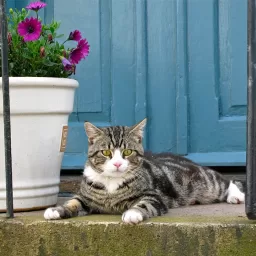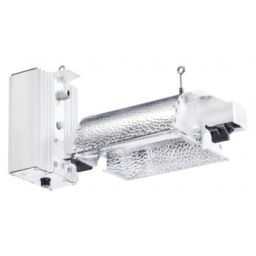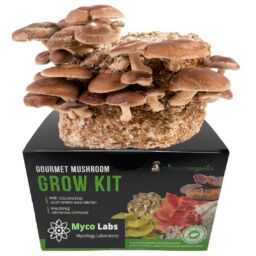Growing Crown Daisy
Crown Daisy – For decoration and oriental cooking
Crown Daisy used to be a popular summer garden flower. It is self-seeding, once established in the garden, and provides lovely cut blooms for vases.
Grown for seeds in Denmark
Crown Daisy disappeared for a few years to turn up again in another guise. Large Danish seed companies now grow seed for the Japanese, who cannot produce seed in their own climate.
Summertime in Denmark presents colorful fields of blooming Crown Daisy, which are left to go to seed. The Japanese use the young leaves in their cooking to add flavor to seaweed and fish dishes. The flower heads are also eaten.
Lovely yellow flowers
Crown Daisy is an annual plant native to the Mediterranean region. It has attractive, smooth leaves with toothed lobes. The lower ones are pointed and the upper ones lie close to the stem. The 1 1/2 inch daisy flowers are on long stems. They have one to four rings of pale yellow outer petals with a pale yellowish-green disk at the center.
Blooms in the summer
Crown Daisy blooms in July-September. The double-flowered varieties are the most popular for both indoor cut flowers and outdoor flower beds. The tall-stemmed varieties are 3-4 feet tall, but there are also dwarf hybrids with double blooms in stronger colors. They will only reach a height of 1-2 feet.
Cultivating Crown Daisy
Crown Daisies are delightful, robust, summer Chrysanthemums which like a dryish soil and a sunny to half-shady spot.
Sow the seeds outdoors in April. The taller varieties should be sown 10-12 inches apart and the smaller varieties 4-6 inches apart. These plants are also well-suited to pots and boxes on a patio.
Water in dry periods and feed moderately through the summer. The flowers appear July through September. After this, the flowers will set seed, which can be gathered for the following year.
If seeds are unwanted, the plant will shed them and produce large patches of Crown Daisy a year later. It spreads like a weed, but is not too difficult to pull up.
In cooking…
Seeds can be sown in flowerpots and placed in the kitchen window. Use the tender young leaves from new plants. Clip off the new leaves as done with Watercress. They have a sharp, peppery taste. Of course, taste preference is another thing. It does have a pleasant fragrance and one leaf placed in a drink can be rather tasty. These plants are used in several other countries, such as France, Italy, and Belgium, in the manufacture of liqueurs.
Plant Doctor
If grown for culinary purposes, Crown Daisy should never be sprayed with insecticide. However, since it is the young leaves that are used in cooking, they are usually harvested before pests or diseases can do any damage.
Reddish leaves are the result of cold.
Rust-colored patches under the leaves are a sign of Chrysanthemum rust. This is difficult to treat. Remove the plants before others are infected.
White, floury deposits on leaves and tipshoots indicate powdery mildew. Remove affected parts and water more often. If the plant is not intended as food, use fungicide.
Gray mold makes gray deposits on leaves and stems. Again, treat with fungicide only if the plant will not be used for cooking.
Leaf miners are small white larvae which chew pathways through the leaves. Use an insecticide.
NOTE: Pesticides not used according to label directions can be harmful to man, animals and plants. Use only pesticides that have labels with directions for home and garden use. Always read and follow label directions.
Buying Tips
Seeds can be purchased from any large mail-order seed company which grows the plant for export to Japan.
Lifespan: An annual summer flower.
Season: Blooms from July through September.
Difficulty quotient: Very easy.
In Brief
Size and growth rate
Crown Daisy is a summer annual which was once more popular as a garden plant. The tall varieties are about 3-4 feet tall while the dwarf types are about 1-2 feet tall.
Flowering and fragrance
The typical species has yellow Chrysanthemum flowers with yellow-green centers and 1-4 circles of outer petals. They are often double and grow singly or in clusters on a long stem. The dwarf hybrids are more colorful and can have either double or single blooms. The entire plant has an aromatic, almost perfumed smell.
light and temperature
A sunny to half-shady position at typical summer temperatures.
Watering and feeding
Garden plants should be watered in dry periods and fed with moderation. Water potted plants more regularly, although they can dry out a little between waterings.
Soil and transplanting
Ordinary garden soil is fine. Potting soil should be used in boxes and tubs. Provide good drainage with stones or pot shards in the base to keep the roots well-drained.
Grooming
Only if leaves are used for cooking.
Propagating
Sow seeds each April either in the garden or in pots.
Environment
Crown Daisy is a pretty garden plant and also attractive in large pots and tubs on a patio. Use the tall types for cut flowers and the lower, dwarf hybrids as bedding plants.
plant pots
#Growing #Crown #Daisy
Will be pleased to have you visit my pages on social networking .
Facebook page here.
Twitter account is here.
Linkedin account here
Post byBedewy for info askme VISIT GAHZLY




